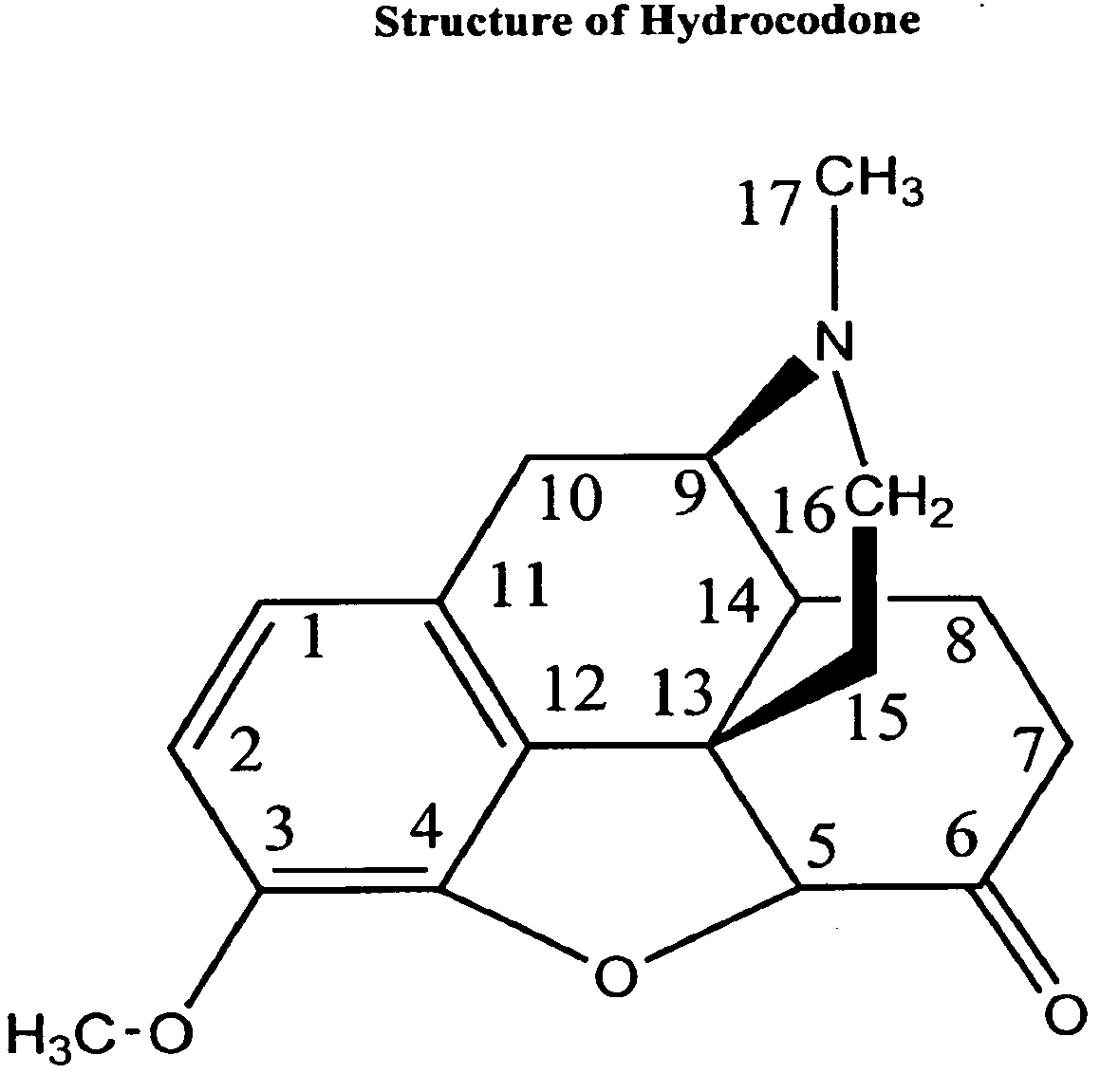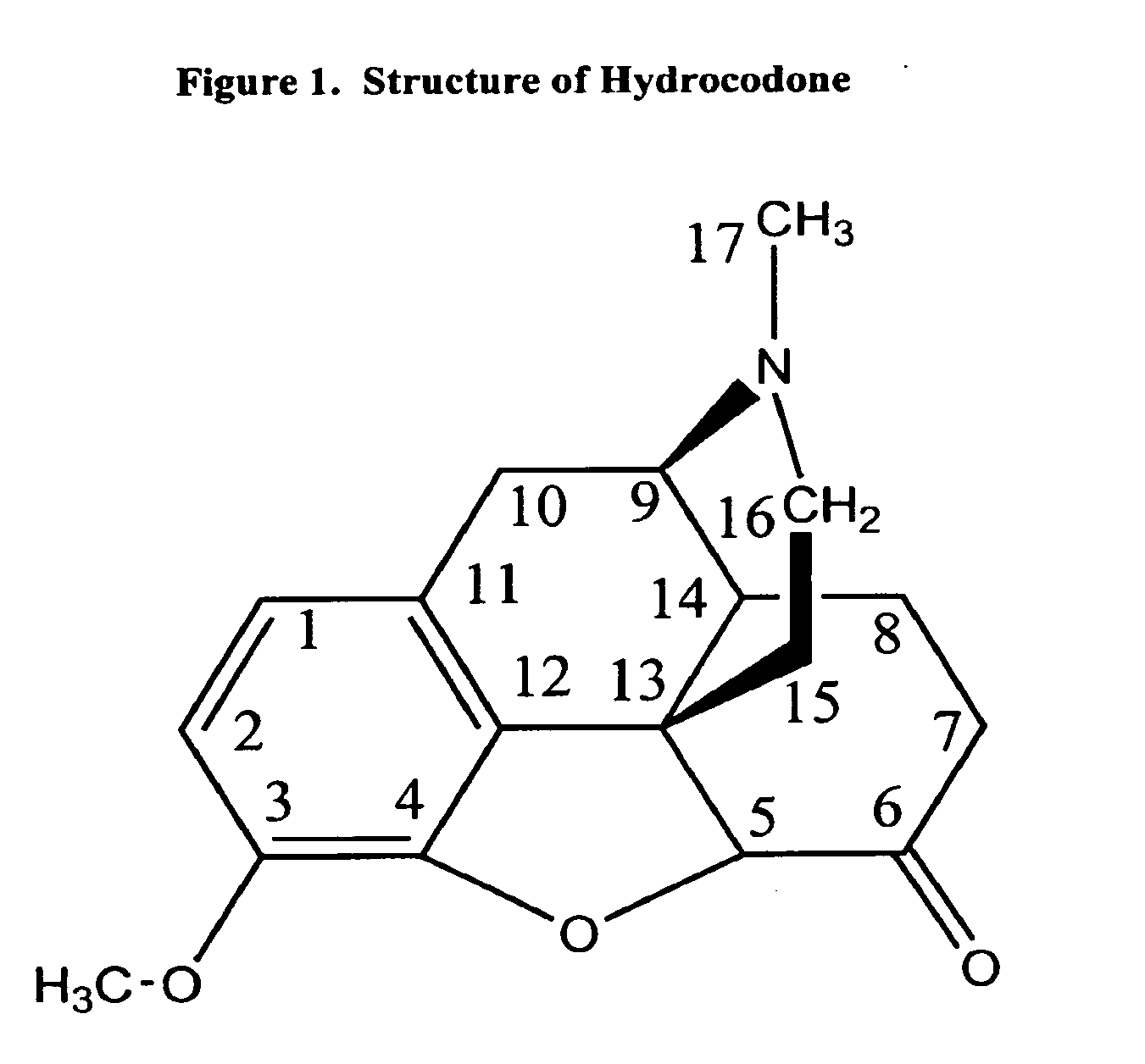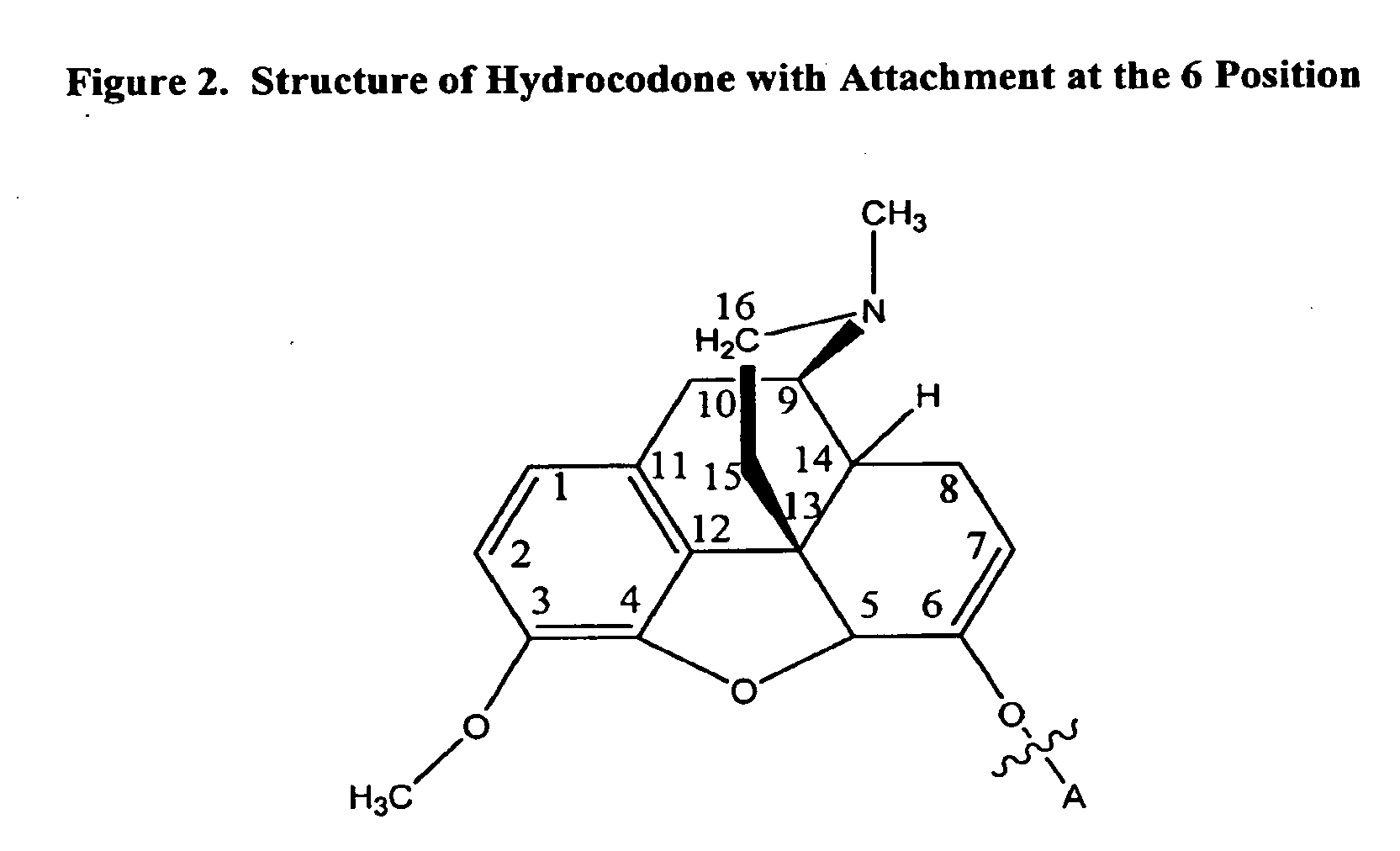Compositions and methods for enhancing analgesic potency of covalently bound-compounds, attenuating its adverse side effects, and preventing their abuse
a technology of covalently bound compounds and compounds, which is applied in the direction of drug compositions, peptide/protein ingredients, metabolic disorders, etc., can solve the problems of difficult extraction of secondary substances, abuse and no reference to teach or suggest the presence of covalently bound controlled substances
- Summary
- Abstract
- Description
- Claims
- Application Information
AI Technical Summary
Benefits of technology
Problems solved by technology
Method used
Image
Examples
example 15
[0191]Gulonic acid-Ile-Hydrocodone was prepared in a manner similar to Example 13 except Ile-Hydrocodone was used as the conjugated starting material and Gulonic acid-OSu was used as the carbohydrate starting material.
D-amino acid Hydrocodone Conjugates
example 16
(d)-Lys-(1)-Lys-Ile-Hydrocodone
[0192]To a solution of Ile-Hydrocodone in DMF was added NMM followed by Boc-(d)-Lys(Boc)-(1)-Lys(Boc)-OSu. The solution was stirred at ambient temperatures for 18 hours. Solvent was removed. Crude material was purified using preparative HPLC (Phenomenex Luna C18, 30×250 mm, 5 μM, 100 Å; Gradient: 90 water / 10 0.1% TFA-MeCN→0 / 100; 30 ml / min.). Solid was collected as a slightly yellow powder. To the Boc-(d)-Lys(Boc)-(1)-Lys(Boc)-Hydrocodone was added 4N HCl in dioxane. The resulting mixture was stirred at ambient temperatures for 18 hours. Solvent was removed and final product dried under vacuum. Solid was collected as a slightly yellow solid.
Oral Bioavailability of Peptide-Hydrocodone Conjugates at a Dose (1 mg / kg) Approximating a Therapeutic Human Dose and at an Elevated Dose
[0193]When the peptides are conjugated to the active agent hydrocodone oral bioavailability is maintained or increased over an equivalent hydrocodone dose when the dose is administe...
example 17
Bioavailability of Peptide-HC Conjugates by the Intranasal Route
[0195]When the peptides are conjugated to the active agent hydrocodone the bioavailability by the intravenous route is substantially decreased thereby diminishing the possibility of overdose when the drug is administered by snorting.
PUM
| Property | Measurement | Unit |
|---|---|---|
| time | aaaaa | aaaaa |
| time | aaaaa | aaaaa |
| time | aaaaa | aaaaa |
Abstract
Description
Claims
Application Information
 Login to View More
Login to View More - R&D
- Intellectual Property
- Life Sciences
- Materials
- Tech Scout
- Unparalleled Data Quality
- Higher Quality Content
- 60% Fewer Hallucinations
Browse by: Latest US Patents, China's latest patents, Technical Efficacy Thesaurus, Application Domain, Technology Topic, Popular Technical Reports.
© 2025 PatSnap. All rights reserved.Legal|Privacy policy|Modern Slavery Act Transparency Statement|Sitemap|About US| Contact US: help@patsnap.com



